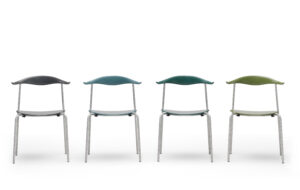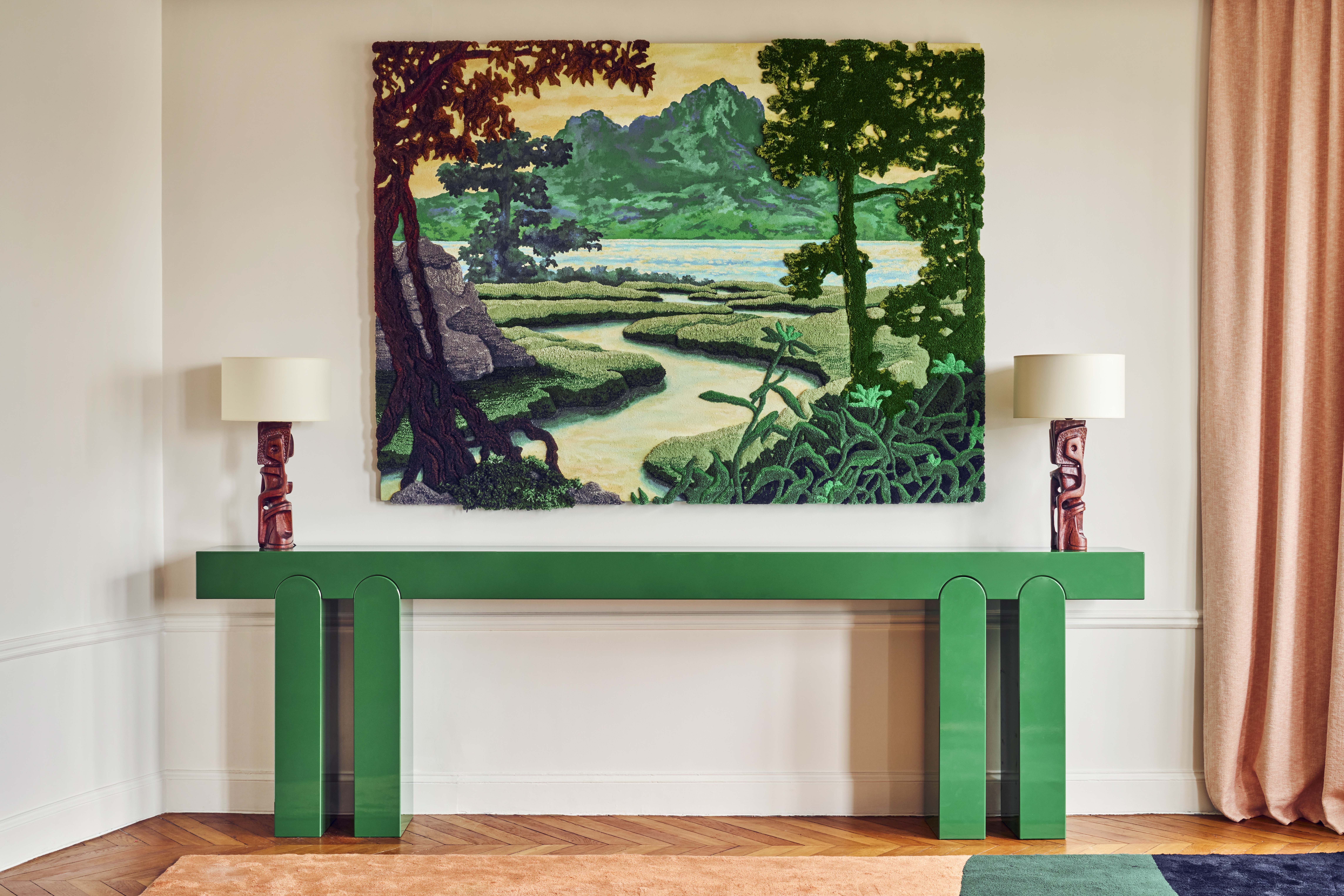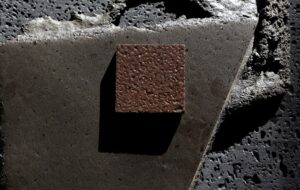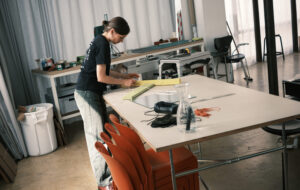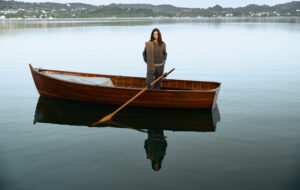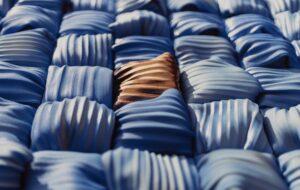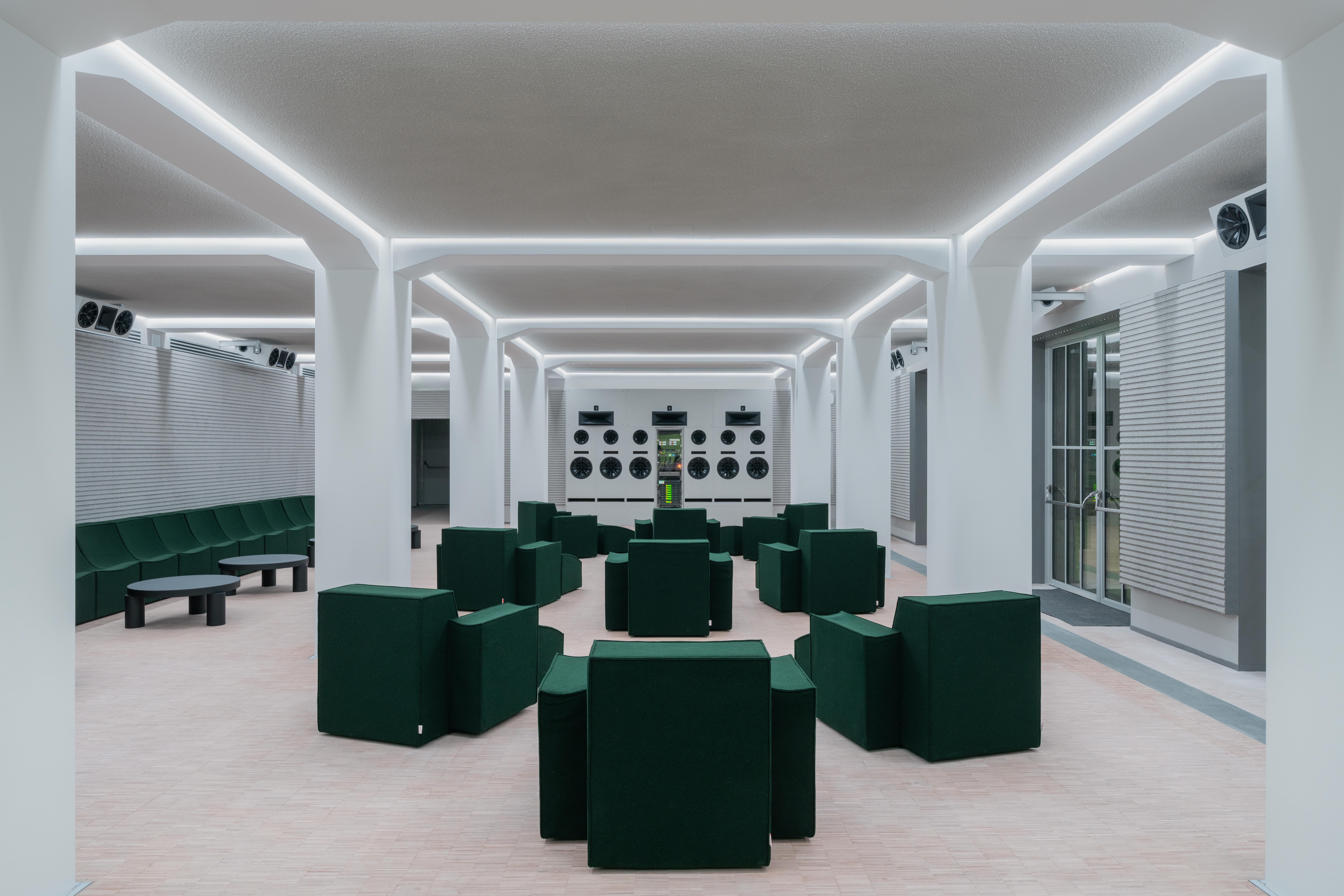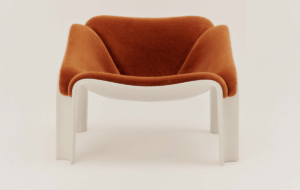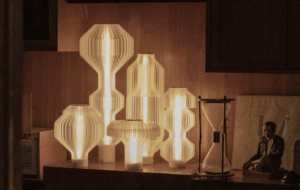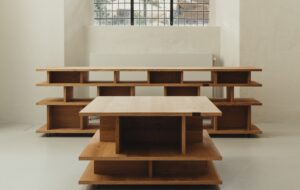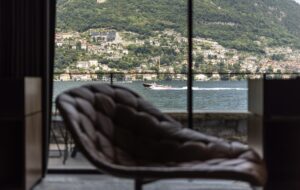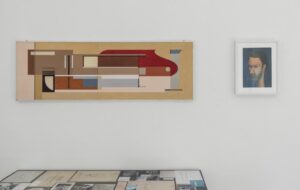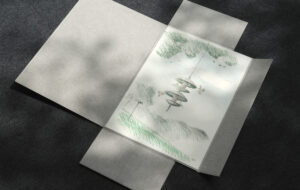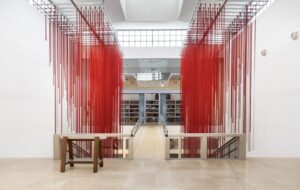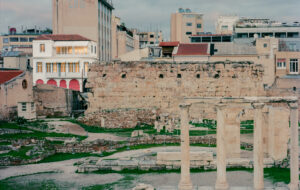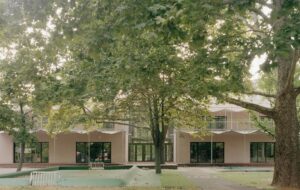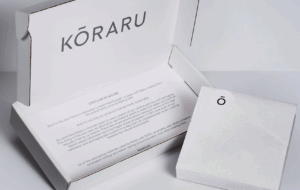


Paris
words Max Fraser
now! design à vivre was the interesting bit of the sprawling Maison & Objet trade fair held in January in the Paris-Nord Villepinte exhibition halls on the outskirts of the city.
Comprising eight difficult-to-navigate halls, a quick whistle-stop day trip from London allowed enough time to check out only the most relevant section of the vast show. Now! Design à Vivre displayed young designers and new manufacturers alongside key international brands such as Edra, Zanotta, Ligne Roset and Baccarat.
Under the glaring overhead lighting was the confident stand of Vlaemsch, which produces the work of a dozen or so mainly Belgian designers, under the directorship of leading Belgian talent, Casimir. Particular favourites were the Brackets Included shelves, which seamlessly incorporate the standard shelf bracket as integral reinforcement. The powder-coated steel Backless Chair is a stool that retains something of the expression of a chair.
La Corbeille displayed some quirky items, such as sugar cubes shaped like the handle of a cup, and a coat stand using clothes hangers as hooks. Belgian rapid-prototyping company Materialise previewed the linear Polyvase.MGX by Jelly Lab before its official launch in Milan in April. Likewise, leading French crystal company Baccarat gave us a glimpse of Philippe Starck’s new table light, also destined for Milan. Starck’s disposable platters for IPI, now in production, cleverly allow you to safely hold both food and drink in one hand.
Meanwhile, ex-Starck protégé Jérôme Olivet attracted attention for his futuristic range of faceted, hand-stitched black leather bags and accessories. Offerings from the larger French furniture brands were limited in appeal, aside from a few decent seating additions by François Bauchet and Eric Jourdan for Ligne Roset. Finally, a feature area was dedicated to the pared down furniture and product designs of French architect Jean Nouvel, who was declared the Maison & Objet 2006 designer of the year.
Stockholm
words: Kieran Long
stockholm furniture fair threw up some pre-Milan surprises this year, mostly from Scandinavian brands.
Swedese, perhaps the foremost of the Swedish manufacturers at the fair, displayed its nest of tables by Japanese designer Nendo and the Log series from Naoto Fukasawa. Nendo’s tables are decorated with flowers in photochromatic film that appear and disappear as the glass table tops slide underneath one another. Fukasawa was the guest of honour at the fair, and attracted Japanese visitors in copious supply.
Swedish office-product firm Materia displayed the first objects in mass production from Front (icon 027) – including a bin that expands according to how full it is, and perspex screens that look like petrified curtains. Front also designed a bar for the fair – a riot of ideas crammed into a glazed link between two of the exhibition halls, including remote controlled floor lamps, upside down pink trees and a giant plastic horse.
Lighting manufacturer Örsjö showed an eclectic collection, with the raw copper pipes of Jonas Bohlin’s Kvist chandelier, and the rather buttoned-up elegance of the Aria floor lamp, designed by Stockholm stars Claesson Koivisto Rune for the new restaurant at the Stockholm Opera House.
Outside the exhibition halls the snow was melting, and tramping around the city was a less-than-pleasant experience. But it was worth it for the We Are Going Underground show, now in its second year, which showed diverse designers including Thomas Bernstrand (his Foto floor lamp designed with Mattias Ståhlbom for Zero was ubiquitous), Peter Andersson, Konkret Form and the intriguing Albin Karlsson’s clocks. Other highlights were Åsa Ohlsson’s steel doylies and an extraordinary rug designed by Malin Palm in collaboration with Ohlsson, displaying a plan of the city of Stockholm.
The Bouroullec Brothers were in town for the opening of their second interior design project – a showroom for Danish textile company Kvadrat draped in curtains of interlocking fabric panels. Erwan Bouroullec said: “It’s a return to an old history of tapestry and hanging fabric on the walls.”
www.stockholmfurniturefair.com
Cologne
Konstantin Grcic was the star of the Cologne Furniture fair, with his spectacular kasbah-like temporary restaurant that was the social heart of the week-long festival. Based at Stylepark, the fair’s major fringe show, it was populated by students, young designers and some larger brands wanting to be associated with the event’s alternative atmosphere.
Grcic’s Orient Express restaurant occupied the central atrium of the building and combined his One and Osorom chairs and Diana tables with Persian carpets, while his Mayday lamps were hooked onto two huge, concentric chandeliers.
By day the space was a hub of visitors sipping coffee, eating spinach quiche and admiring the lighting. By evening, the tables and chairs were cleared and the restaurant was transformed into a dancefloor, with partygoers swinging from the chandeliers while Grcic ran around frantically trying to reattach the Mayday lamps. He eventually gave up, muttering that the installation was out of his control.
Stylepark also displayed some of the most interesting young designers of the fair. Notable exhibits included Stolenwood’s room inspired by western films with foam furniture, Istanbul design group u:b studio’s coffee table, which you can hang books from, and Demackerdesign’s Origami tables.
The main event, International Furniture Fair Cologne, occupied eleven vast halls of the city’s fairground. It was a little lacklustre this year, with exhibitors such as Moooi, Moroso and Quinze & Milan breaking away to exhibit in their own venue – Design Post, a former mail sorting depot.
German veteran Dieter Rams and younger names Astrid Krogh, Stefan Diez and Joris Laarman were responsible for this year’s Ideal House exhibits. Laarman’s striking scaffold house stood out, but Rams’ effort looked like it was trying to be Japanese architecture, but the kitsch, plastic version.
Other highlights included Reddish, a young duo from Israel who won the Inspired by Cologne competition with their “tattooed” table, and London’s Nice Design, who were runners-up with their Hybrid wallpaper.
The most controversial exhibit of the week was Gaetano Pesce’s furniture suspended in a net below a crucifix, in the design district’s Church of Christ.
Anna Bates

